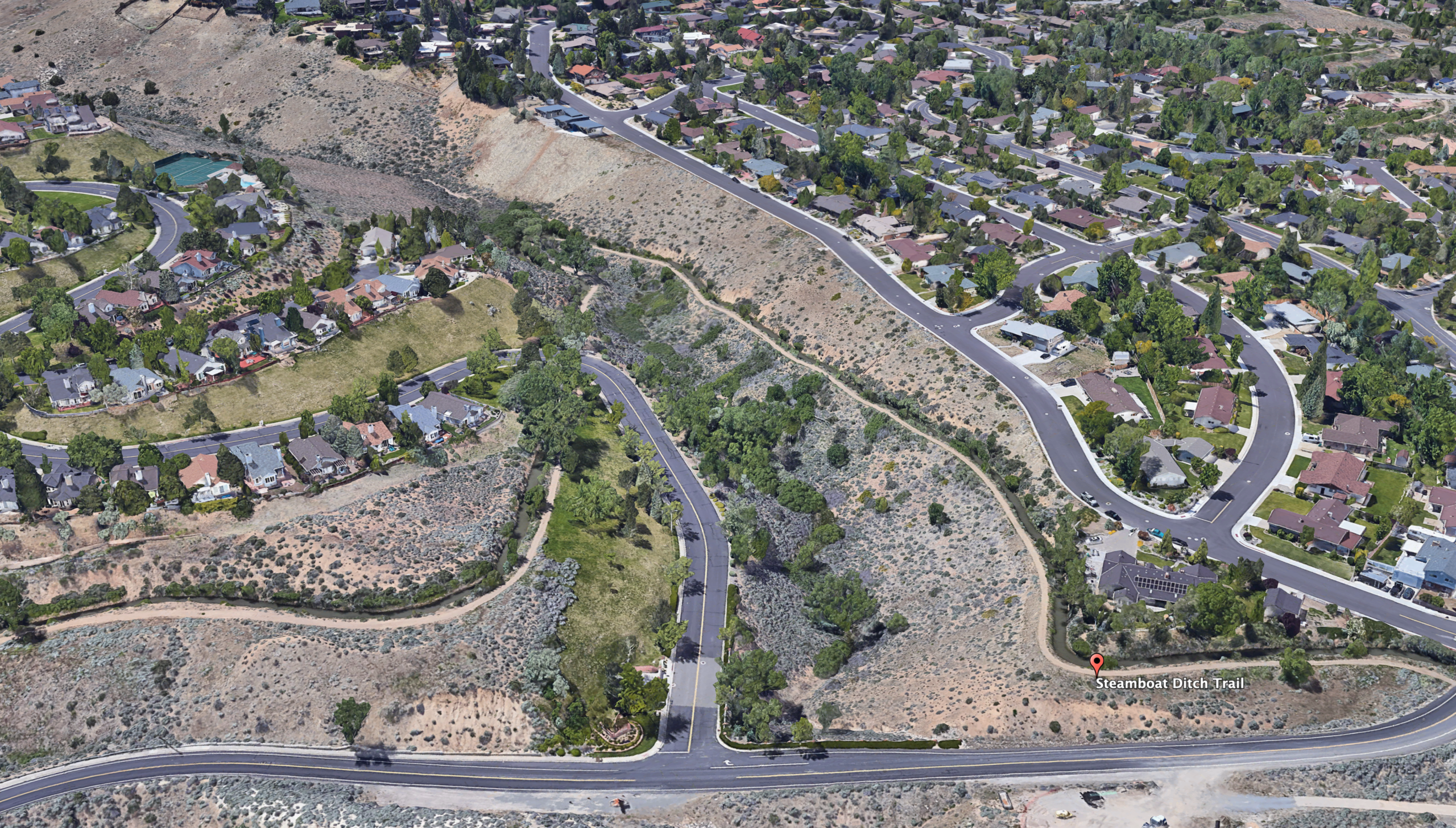Much has been made on social media about a proposed improvement project to the Steamboat Ditch canal that is still in its earliest planning stages.
The Steamboat Ditch was built in the 1870s by Chinese laborers. The trail that runs alongside it has long been used for recreation by locals who enjoy the plants and wildlife in the area. Water is delivered to approximately 1,530 acres and to approximately 500 landowners along its 34-mile stretch of open canals and existing pipelines.
The proposed plan for improving the Steamboat Ditch includes replacing “approximately 78,000 feet of open canal with pipelines within the existing alignments.” In social media posts made about the plan, locals decried the idea, saying it would rob them of the beauty of the trail and potentially hurt the property values of homes built near it.
Some people tagged Reno City Council members in the comments about the plan; however, the City of Reno would not be responsible for the project.
The Steamboat Ditch is controlled by the Steamboat Canal & Irrigation Company (SCIC), and plans to improve it would be applied for through the Washoe County Water Conservation District (WCWCD) and funded with federal money from the U.S. Department of Agriculture through the Watershed Protection and Flood Prevention Program.
Locals who are concerned about the proposal to replace nearly 15 miles of open canal with a pipeline still have time to voice their dissent to the idea. The period for public comment on the project has been extended to Feb. 16, and people are being advised to address their concerns to Elizabeth Spaulding, a project manager for the Langdon Group—an Idaho company that is spearheading public outreach during the planning. Spaulding can be reached via phone or email. Her contact information can be found in the publicly released planning documents.
Project in beginning stages
The improvement project is in its nascency. The first hurdle it must clear is meeting the requirements of the National Environmental Policy Act. During the planning process—which is expected to be completed sometime in the fall of 2022—it must be determined by the USDA Natural Resources Conservation Service if an environmental impact statement will be sufficient or if an environmental impact study must be conducted in greater depth.
If planning for the project is approved, project design would take place during 2022 and 2023. Construction on the project would begin in 2023 and be completed in the spring of 2025.
Among the potential benefits of the project listed in planning documents are improving water quality to tributaries of the Truckee River, increasing water conservation, improving public safety by minimizing flood risks from a potential canal breach and eliminating the potential for people and animals to fall into the open canals.
While some residents said in social media comments that they’ve never known the Steamboat Ditch canals to flood, this has happened in the past and caused damages to homes in the area. Most recently, the canals overflowed during winter flooding in January 2017.
While the Reno City Council has no involvement in the proposed project, Councilmember Naomi Duerr—whose ward, Ward 2, encompasses areas where the Steamboat Ditch and others have flooded—weighed in via a Facebook post in which she noted few people, the Reno City Council included, knew about the project until recently.
She noted the importance of residents commenting during the project’s environmental assessment stage, writing, “Having commented on many EAs and EISs myself, I know it is critical to let your thoughts be known NOW during the scoping period while the project is under development and in flux.”
Duerr added, “I believe the Steamboat Ditch Company is trying to conserve water leaking out the bottom and sides of their ditch, prevent water seepage into adjacent homes and properties, prevent falls into the ditch and other potential risks, and reduce the potential for flooding. All are real issues.”
She said concerned citizens should take the time to “look at what the project proponents are trying to accomplish. If you object to the proposal, suggest other alternatives to reach the same goals. Or, challenge the premise of the goals.”
An additional downside of the project, she said, would be the potential loss of the recreational trails along the ditch. While it operates the canals and pipelines, the SCIC does not own the majority of the land along which the Steamboat Ditch runs.
Much of it along its 34-mile stretch is owned by private property owners. SCIC has easements to operate and manage the ditch where runs across private property. The trail upon which people often walk is actually meant to give access to SCIC to maintain the ditch.
This Is Reno reached out to the Langdon Group, the SCIC and WCWCD for comment on the project and recent public reaction to it but did not hear back prior to publication of this article. The story may be updated if and when we receive responses from these agencies.
In the meantime, those wishing to gain further information on the proposed project can visit the Truckee River Watershed Environmental Document to get contact information for submitting public comment and links to further details on what’s being proposed.

